Ivan Čuk
Editorial
Thomas Heinen, Anja Brinker, Melanie Mack, Linda Hennig
THE ROLE OF POSITIONAL ENVIRONMENTAL CUES IN MOVEMENT REGULATION OF YURCHENKO VAULTS IN GYMNASTICS
Boštjan Jakše, Barbara Jakše
POTENTIAL BENEFITS OF CONSUMING OMEGA-3 FATTY ACIDS FOR ARTISTIC GYMNASTS
Sunčica Delaš Kalinski
ELITE FEMALE GYMNASTS AT TWO OLYMPIC GAMES – QUALITY OR LUCK?
Maria Kritikou, Olyvia Donti, Gregory C. Bogdanis, Anastasia Donti, Kalliopi Theodorakou
CORRELATES OF ARTISTRY PERFORMANCE SCORES IN PREADOLESCENT RHYTHMIC GYMNASTS
Amanda Batista, Rui Garganta, Lurdes Ávila-Carvalho
DANCE STEPS, DYNAMIC ELEMENTS WITH ROTATION AND THROW AND MASTERY ELEMENTS IN RHYTHMIC GYMNASTICS ROUTINES
Maria-Raquel G. Silva, Rita Santos-Rocha, Paulo Barata, Francisco Saavedra
GENDER INEQUALITIES IN PORTUGUESE GYMNASTS BETWEEN 2012 AND 2016
Karmen Šibanc, Miriam Kalichová, Petr Hedbávný, Ivan Čuk, Maja Bučar Pajek
COMPARISON OF MORPHOLOGICAL CHARACTERISTICS OF TOP LEVEL MALE GYMNASTS BETWEEN THE YEARS OF 2000 AND 2015
Anton Gajdoš
Short Historical Notes IX
Ivan Čuk
Editorial
Dear friends, Competitions under FIG and Continental Unions flag this spring have already brought about new heights of development. Especially in artistic gymnastics we have been surprised by presentations of the triple salto backward tucked on floor and the triple salto backward piked from rings (which MTC FIG recognises as a new element with H difficulty and goes by the name of Donnel Whittenburg). We are proud that Whittenburg performed it in Slovenia, during the World Challenge Cup in Koper. Not only gymnasts and coaches are searching for new content but also researchers world-wide. The first article in this issue comes from a group of researchers from Germany lead by Thomas Heinen. They looked at how the gymnast’s motor control regulates Yurchenko vaults. The article includes some very important information for coaches in the sense of motor learning. The second article is a review by Slovene authors Boštjan and Barbara Jakše (the latter used to be a gymnast who competed at World Championships under her maiden name Turšič) in which they discuss the importance of omega-3 fatty acids for gymnastics. A lot of condensed information again with high value not only for coaches but also gymnasts and their parents. The third article is by one author only from Croatia. Sunčica Delaš Kalinski explored the main reasons why female artistic gymnasts rarely participate in more than one Olympic Games. Another article for coaches to think about their gymnasts’ careers. The fourth article is from a team from Greece lead by Maria Kritikou. It looks at the correlations between artistry performance scores and morphologic characteristics and motor abilities. The article provides lots of interesting information for coaches, judges and gymnasts in the area where artistry influences the final scores. The fifth article comes from Portugal. An analysis of rhythmic routines by Amanda Batista, Rui Garganta and Lurde Avila Carvalho concludes that the more difficult elements result in lower scores as judges influence the evaluation of whether difficulty is recognised or not. The sixth article is also from Portugal. Researchers around Maria-Raquel G. Silva analysed gender inequalities in the Portuguese gymnastics between 2012 and 2016. Perhaps the new FIG discipline, parkour, will help make gymnastics in Portugal more popular among males. The last article comes from a mixed group researchers from the Czech Republic and Slovenia. The group, led by Karmen Šibanc, compared morphological characteristics of top level gymnasts between years 2000 and 2015. Two different philosophies of the Code of Points have also had a minor impact on the changing morphologic structure of gymnasts. Anton Gajdoš prepared a new contribution on gymnastics history, refreshing our memory of German team at OG 1896, Walther Lehman and Yukio Endo. Just to remind you, if you quote the Journal: its abbreviation on the Web of Knowledge is SCI GYMN J. I wish you pleasant reading and a lot of inspiration for new research projects and articles,
Thomas Heinen, Anja Brinker, Melanie Mack, Linda Hennig
THE ROLE OF POSITIONAL ENVIRONMENTAL CUES IN MOVEMENT REGULATION OF YURCHENKO VAULTS IN GYMNASTICS
Numerous gymnastics skills demand a precise interaction between the gymnast and the environment. It remains unclear, how different environmental cues act and interact in the regulation of complex skills, such as Yurchenko-type vaults, where the gymnast performs a round-off before contacting the springboard. The aim of this study was to assess the roles of both, the position of the round-off mat and the position of the springboard, in the regulation of a Yurchenko timer. Kinematic parameters of eight female expert gymnasts’ Yurchenko timers were examined in a baseline condition and two experimental conditions with different manipulations of the positions of the round-off mat and the springboard. Results revealed that visually controlled regulation of the run-up occurred in average two steps prior to the hurdle. Hand positioning on the round-off mat preceded a constant round-off flight phase. Gymnasts placed their feet on average on the same spot on the springboard, regardless of whether the springboard position was manipulated. Finally, hand positioning on the vault block mainly varied as a function of the position of the springboard and the distance of the flight phase to support. This study provides evidence that the position of the springboard regulates Yurchenko-type vaults. Knowledge about relationships between informational sources in the environment and the resulting motor behaviour in gymnasts may help coaches to develop training programs aiming to enhance gymnasts’ ability to utilize this information in skill performance under changing environmental conditions in training and competition.
Keywords: visual perception, task demands, yurchenko timer, kinematic analysis.
Boštjan Jakše, Barbara Jakše
POTENTIAL BENEFITS OF CONSUMING OMEGA-3 FATTY ACIDS FOR ARTISTIC GYMNASTS
For an efficient daily training of gymnasts and, at the end, for an efficient performance, it is important to have an energy- and nutrient-sufficient diet, which enables a proper balance between maintaining appropriate body composition, excellent physical preparation, and general health. The combination of an intake of negative-calorie food and an increased amount of training, which enables the control of body weight, can have negative consequences when it comes to nutritional inadequacy, which can lead not only to a weakened immune system but also to an insufficient recovery after daily trainings. Today, athletes as well as gymnasts consume various dietary supplements to improve physical and cognitive abilities, for a more efficient recovery, a stronger immune system, and an easier control of appropriate body weight. A sufficient intake of omega-3 fatty acids – as is also true of vitamin B12 and D – is usually a part of a special assessment of dietary habits and needs of gymnasts, which they can fulfil with ordinary diet or dietary supplements. The purpose of this article is to relatively clearly evaluate the scientific evidence about the potential benefits of consuming omega-3 fatty acids (ALA, EPA, and DHA) for a variety of objectives for gymnasts and, at the end, to critically sum them up in a sensible recommendation, while being aware of limitations of the evidence. Furthermore, this article is intended to encourage researchers to study the direct influence of nutrition and potentially beneficial and permitted dietary supplements for a variety of objectives for gymnasts.
Keywords: body weight, physical ability, cognitive abilities.
Sunčica Delaš Kalinski
ELITE FEMALE GYMNASTS AT TWO OLYMPIC GAMES – QUALITY OR LUCK?
Relatively small number of gymnasts participate at the Olympic Games and even smaller number participates at Olympic Games consecutively, due to numerous different reasons. Therefore, this paper aims are: 1) to determine the number of female gymnasts who participated in the C-I competition at Olympic Games held in 2012 and at Olympic Games held in 2016; 2) to determine characteristics and differences in results of consecutive participants at these two Olympic Games; 3) to determine differences between consecutive participants and other competitors at the afore defined competitions. It was found that 25 female gymnasts participated at two consecutive Olympic Games. From one to another Olympic Games, consecutive participants have numerically increase all scores; significantly increased Execution and Final Scores on the uneven bars; significantly decrease Execution and Final Score on the balance beam. Compared to other gymnasts from the 2012 and 2016 Olympic Games, consecutive participants had numerically higher values in all variables, but only some of them have been determined as significantly different. Consecutive participants confirmed the possibility of continuous quality of skills development in mid 20s.
Keywords: consecutive participants, C-I competition, 2012-2016 Olympic Games, ANOVA.
Maria Kritikou, Olyvia Donti, Gregory C. Bogdanis, Anastasia Donti, Kalliopi Theodorakou
CORRELATES OF ARTISTRY PERFORMANCE SCORES IN PREADOLESCENT RHYTHMIC GYMNASTS
This study examined the association between physical abilities, anthropometric characteristics and artistry performance scores in Greek, national level, competitive rhythmic gymnasts. Forty-six preadolescent gymnasts (aged 9.9±1.3 years) underwent a series of physical fitness (balance, flexibility, muscular power and endurance, sport-specific high intensity shuttle run performance) and anthropometric measurements (body composition, and somatotype). Artistry performance score and its sub-components (unity, music and movement, and expression scores) were obtained during a compulsory routine without apparatus. Multiple regression analyses revealed that sideways leg extension and high intensity shuttle run performance accounted for 43.7% (p < 0.01) of the variance in the score of artistry. The same fitness parameters accounted for 47.1% (p < 0.01) and 53.2% (p < 0.01) of the variance in the scores of artistry’s sub-components, unity and music and movement, respectively. Muscular endurance of the back extensors and subscapular skinfold accounted for 29.2% (p < 0.01) of the variance in the expression score. Ectomorpy was the dominant somatotype component (2.7-3.0-4.2, for endomorphy, mesomorphy and ectomorphy, respectively). The results of this study highlight the importance of hip flexibility, high intensity shuttle run performance, muscular endurance of the back extensors, and specific anthropometric traits as contributing components to the artistry score in young rhythmic gymnasts.
Keywords: expression, physical abilities, range of motion, somatotype, high intensity shuttle
Amanda Batista, Rui Garganta, Lurdes Ávila-Carvalho
DANCE STEPS, DYNAMIC ELEMENTS WITH ROTATION AND THROW AND MASTERY ELEMENTS IN RHYTHMIC GYMNASTICS ROUTINES
Analyze of individual elite routines allows to gain more knowledge about the performance of the RG structure. Therefore, the aim of this study is to know the difficulty elements diversity (dance steps, masteries and dynamic elements with rotation and throw) in individual routines of elite gymnasts who competed at the 2013 and 2014 Lisbon RG World Cup and to compare these characteristics across different ranking groups. 288 official difficulty forms of 4 routines were analyzed. The gymnasts’ routines were clustered into three groups according to their ranking position. Non-parametric Kruskal-Wallis and Mann-Whitney tests were used. Pearson Correlation was used to analyze the association degree of the difficulty elements in the gymnasts’ final score. The best gymnasts presented routines with some different characteristics, however, we verified a high similarity in the difficulties elements analyzed in the compositions that can compromise the originality and variety of this sport. We observed that the higher gymnasts’ final score, have also higher departure difficulty score; lower number of combinations of base and criteria in masteries; higher number of non-fundamental and lower number of fundamental group elements in masteries. On the other hand, higher number of masteries and number of additional criteria of body rotations in dynamic elements with rotation and throw, lower the gymnasts’ final score. However, we believe that the real differences in the ranking groups is mostly justified by evaluation of the judges of the difficulty elements presented in the official Difficulty forms and in the execution quality of the gymnasts.
Keywords: difficulty elements, individual routines, elite gymnasts, rhythmic gymnastics.
Maria-Raquel G. Silva, Rita Santos-Rocha, Paulo Barata, Francisco Saavedra
GENDER INEQUALITIES IN PORTUGUESE GYMNASTS BETWEEN 2012 AND 2016
Gender participation rates are different and the potential reasons are namely sports availability and stereotypes. In spite of gymnastics being recently considered as an “early specialization” sport, characterized by a higher number of female participants than male ones, it has been highlighted that there are much less published studies in female athletes than in males. The aim of this study was to analyze the gender participation among Portuguese gymnasts according to gymnastics’ disciplines. An individual authorized database of all national gymnasts involved in the National School of Gymnastics of the Gymnastics Federation of Portugal among four athletic seasons, namely 2012/2013,2013/2014, 2014/2015 and 2015/2016 was used. From a sample of 14,742 gymnasts, 81.3% were female and only 18.7% were male during the athletic season of 2012/2013. Similar results were found in the next three seasons as follows: 83.3% females and 16.7% males in 2013/2014, 84.9% females and 15.1% males in 2014/2015 and 85.3% females and 14.7% males in 2015/2016. Significantly gymnasts-gender differences were observed for all disciplines. No differences between genders were observed in Rhythmic Gymnastics, Women's Artistic Gymnastics and Men's Artistic Gymnastics due to the exclusive sport participation of female and male gymnasts, respectively. Gymnastics should improve participation and combat gender inequalities.
Keywords: gymnastics, gender participation, athletes, disciplines.
Karmen Šibanc, Miriam Kalichová, Petr Hedbávný, Ivan Čuk, Maja Bučar Pajek
COMPARISON OF MORPHOLOGICAL CHARACTERISTICS OF TOP LEVEL MALE GYMNASTS BETWEEN THE YEARS OF 2000 AND 2015
Over the years gymnastics is changing, difficulty of the routines is improving, the technology and the equipment are developing, Code of Points (COP) is getting new aspects. In 15 years, from the year of 2000 to 2015 COP changed a lot. Two measurements of morphological characteristics of top level male gymnasts were taken and compared, one from the year of 2000 and one from 2015, both from a World Cup Competition in Ljubljana. Our study showed some significant differences in abdomen circumferences and percentage of muscle mass of gymnasts in 15 years. Despite there were no significant differences, the tendency is the increase in body height, with less percentage of body fat and percentage of muscle mass (with the exception of gymnasts competing on floor). With lower percentage of body fat, lower percentage of muscle mass and almost unchanged body weight we can presume bone mass probably increased and with tendency of taller gymnasts also other inner organs, increased weight.
Keywords: male artistic gymnastics, Code of Points, morphological characteristics, differences.
Anton Gajdoš
Short Historical Notes IX
German OG Team 1896, Walther Lehman, Yukio Endo







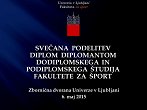
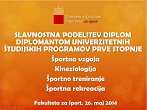
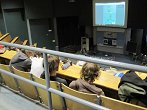









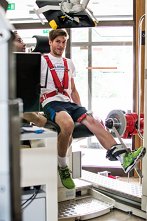

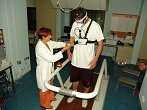




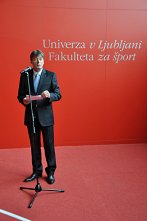







.png)